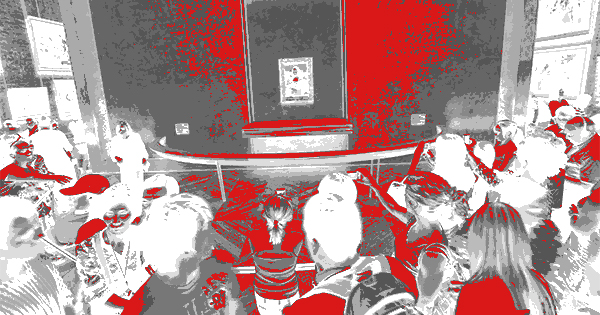
How Brands Grow – Byron Sharp
“How Brands Grow” is a widely recognized marketing book by Byron Sharp that challenges traditional marketing beliefs and presents evidence-based insights into how brands can achieve growth. Here’s a summary of its key principles followed by 10 actionable things for marketers to consider in their campaigns:
Summary of “How Brands Grow”:
- Penetration Over Loyalty: The book emphasizes the importance of acquiring more customers (penetration) rather than focusing solely on loyalty. Expanding the customer base drives growth.
- Mental and Physical Availability: Brands should aim to be both mentally and physically available to consumers. Mental availability relates to brand awareness, while physical availability refers to being accessible where and when consumers need the product.
- Distinctive Brand Assets: Brands should create distinctive brand assets like logos, jingles, and colors to make them instantly recognizable and memorable.
- Ehrenberg-Bass Law: This law states that brands that have more buyers (reach) will have more loyalty. Reach and penetration are critical for growth.
- Mass Marketing: The book challenges the idea of hyper-targeted marketing and suggests that mass marketing can be more effective in reaching a wider audience.
- Continuous Brand Building: Brands should maintain a consistent presence in the market to reinforce their image and availability.
- Share of Voice: Brands should maintain a consistent share of voice (SOV) in advertising to maintain their share of the market.
- Sharp’s Rules: Byron Sharp provides several “Sharp’s Rules” in the book, including the importance of physical availability, mental availability, and distinctive brand assets.
- Loyalty Misconception: The book challenges the common belief that loyal customers are the most profitable. It argues that many loyal customers are light buyers and that growth comes from attracting more light buyers.
- Marketing Science: The book encourages marketers to rely on scientific principles and data-driven strategies to make marketing decisions.
10 Actionable Things for Marketers:
- Prioritize Reach: Focus on expanding your customer base (penetration) rather than concentrating solely on loyal customers.
- Invest in Brand Awareness: Allocate resources to increase brand awareness and recognition among consumers.
- Create Distinctive Brand Assets: Develop unique brand assets that set your brand apart and make it memorable.
- Maintain Consistency: Ensure your brand’s presence remains consistent in the market to reinforce its image.
- Regular Advertising: Maintain a consistent advertising presence to support brand growth.
- Monitor Share of Voice: Keep track of your share of voice (SOV) in the market and adjust advertising budgets accordingly.
- Leverage Mass Marketing: Consider the benefits of mass marketing strategies alongside targeted campaigns.
- Data-Driven Decisions: Use data and marketing science to inform your marketing decisions.
- Question Loyalty Myths: Challenge assumptions about customer loyalty and focus on attracting more light buyers.
- Balance Mental and Physical Availability: Strive to be both mentally and physically available to your target audience.
Incorporating these principles and actionable steps into your marketing campaigns can help your brand achieve growth and success in today’s competitive market.
Related Resources
After reading “How Brands Grow” by Byron Sharp, you might be interested in exploring more books that delve into marketing, branding, and consumer behavior. Here are some recommended books that can further enhance your understanding of these topics:
- “Building Distinctive Brand Assets” by Jenni Romaniuk and Byron Sharp: This book is a companion to “How Brands Grow” and delves deeper into creating and managing distinctive brand assets.
- “Contagious: How to Build Word of Mouth in the Digital Age” by Jonah Berger: This book explores why certain ideas and products go viral, offering insights into creating contagious content and marketing strategies.
- “Made to Stick: Why Some Ideas Survive and Others Die” by Chip Heath and Dan Heath: This book explores why some ideas are memorable and how to craft messages that stick with your audience.
- “Influence: The Psychology of Persuasion” by Robert B. Cialdini: Understanding the principles of persuasion can be invaluable in marketing. This classic book explores the psychology behind why people say “yes” and how you can apply these principles.
- “Positioning: The Battle for Your Mind” by Al Ries and Jack Trout: This book focuses on the concept of positioning in marketing and how to differentiate your brand in the minds of consumers.
- “Ogilvy on Advertising” by David Ogilvy: David Ogilvy was a legendary figure in advertising, and this book offers his insights and principles for effective advertising.
- “Contemporary Advertising” by William F. Arens and Michael F. Weigold: This textbook provides a comprehensive overview of advertising principles and strategies.
- “The Tipping Point: How Little Things Can Make a Big Difference” by Malcolm Gladwell: This book explores the factors that contribute to trends and epidemics, offering insights into viral marketing.
- “Predictably Irrational: The Hidden Forces That Shape Our Decisions” by Dan Ariely: Understanding consumer behavior and decision-making is crucial in marketing, and this book delves into the irrational factors that influence our choices.
- “Thinking, Fast and Slow” by Daniel Kahneman: While not directly about marketing, this book explores how humans think and make decisions, providing valuable insights for marketers.
These books cover a range of topics related to marketing, branding, consumer behavior, and advertising, offering diverse perspectives and strategies for building and growing successful brands.
Latest articles
May 13, 2025
Written by : Mark Rowland
Mark's been working in and interested in all things marketing since 2010.









